Larnaca History Facts and Timeline
(Larnaca, Cyprus)
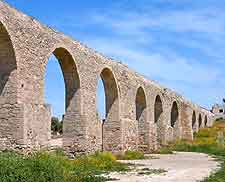
Larnaca is one of the oldest and most important cities in
Cyprus. Over the centuries, the city has played host to the Phoenicians, the Greeks, the Romans, the Ottomans and also the British.
In fact, the history of Larnaca is said to go back to the biblical days of Noah and, as a result, there are many ancient monuments. It is, however, today mostly celebrated for its beaches.
Kittim, Noah's grandson, is said to have founded Larnaca some 6,000 years ago, when it was known as Kition. It has remained inhabited since that time, making this one of the world's oldest cities. Kition came to be the main settlement for the Phoenicians in Cyprus and an important outpost of
Greece. Of interest, the name 'Larnaca' comes from the word 'larnax' (Greek for coffin), with the city being named after the many coffins found here at the site of Kition.
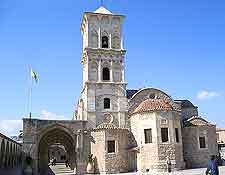
Although little remains of this period of Larnaca history, some important relics have been found at the Kition archaeological site, including preserved Cyclopean stone walls. Also here are remains of Mycenaean temples after the Greeks settled Kition for its lucrative copper trade during the Bronze Age.
To see evidence of ancient Cyprus prior to these times, visitors will need to head to the Neolithic archaeological site of Choirokoitia, a popular day trip from Larnaca. It features walls, tombs and houses from the 7th century BC.
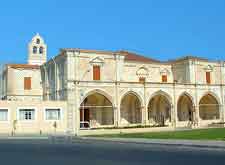
Strife, Trade and Byzantine Times
Larnaca's prime location has attracted various traders, invaders and conquerors over the centuries. It sided with Ashurbanipal of Assyria in the middle of the 7th century BC, while Larnaca became loyal to the Persians during the Greek revolts. An Athenian army soon changed the town's ways, however, after it was re-conquered in 449 BC.
It was the Byzantine era that had the biggest early impact on the history of Larnaca. The Byzantines really put the town on the map, by engaging in extensive trade with the rest of Europe and building many monuments. One of those, the Church of Agios Lazaros (Basilica of Saint Lazarus), dates from the 9th century AD and is a popular tourist sight today.
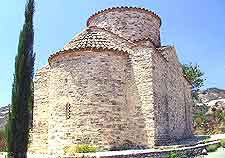
The Ottomans and British
When the Ottoman Empire got its claws into Cyprus in the 16th century, Larnaca became a hub in the Mediterranean. Ottoman rule lasted for three centuries and the Larnaca Fort is one of their lasting monuments. Hailing from 1625, this fortified castle features an archaeological museum with many Kition artefacts. The Ottomans also built the Hala Sultan Tekke mosque on the outskirts of town.
When the British took control of Cyprus in 1878, Larnaca was used as the port of entry and the castle served as a prison. It remained the main centre of the island until Cyprus eventually attained its independence in 1960.
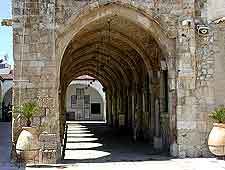
Modern Days and Tourism in the City
As with many other towns on the south coast, Larnaca saw a jump in populace as tens of thousands of Greek-Cypriot migrants fled from the Turkish invasion of the north in the year of 1974. Some 40,000 people settled here, swelling the small population of 25,000 and drastically increasing the size of the town.
Tourism also kicked off from about this time - mainly in the 1980s, with most coming for the beaches, and also yachties for the port. The history of Larnaca is a draw for the more discerning of visitors, who come to see the digs, the Old Town and the District Museum, with its many fine displays
 Larnaca is one of the oldest and most important cities in Cyprus. Over the centuries, the city has played host to the Phoenicians, the Greeks, the Romans, the Ottomans and also the British.
Larnaca is one of the oldest and most important cities in Cyprus. Over the centuries, the city has played host to the Phoenicians, the Greeks, the Romans, the Ottomans and also the British. Although little remains of this period of Larnaca history, some important relics have been found at the Kition archaeological site, including preserved Cyclopean stone walls. Also here are remains of Mycenaean temples after the Greeks settled Kition for its lucrative copper trade during the Bronze Age.
Although little remains of this period of Larnaca history, some important relics have been found at the Kition archaeological site, including preserved Cyclopean stone walls. Also here are remains of Mycenaean temples after the Greeks settled Kition for its lucrative copper trade during the Bronze Age.

